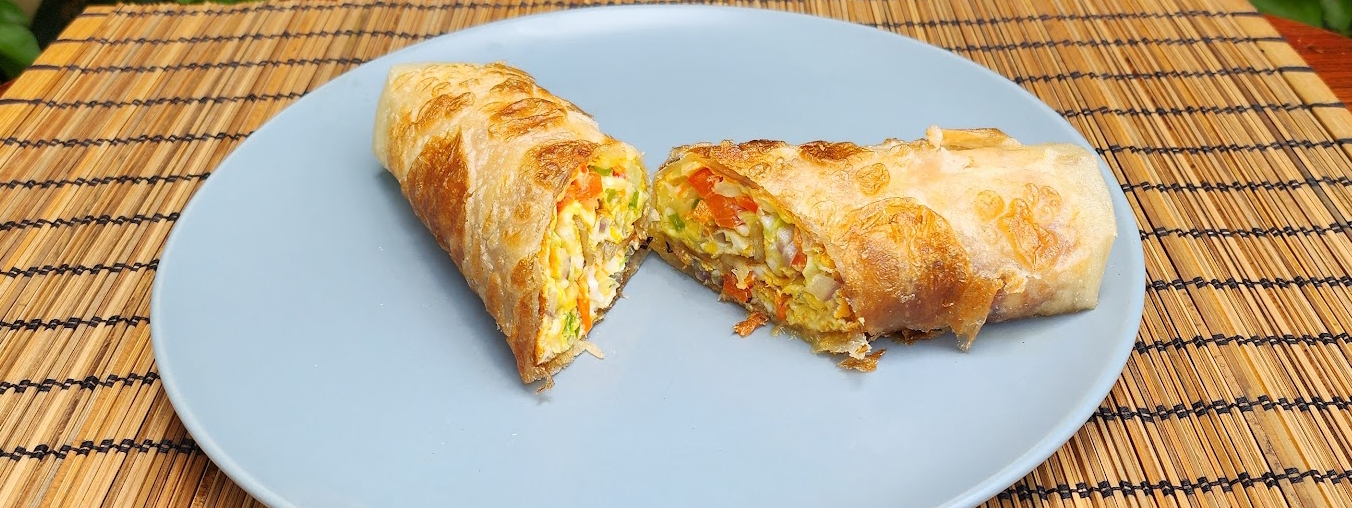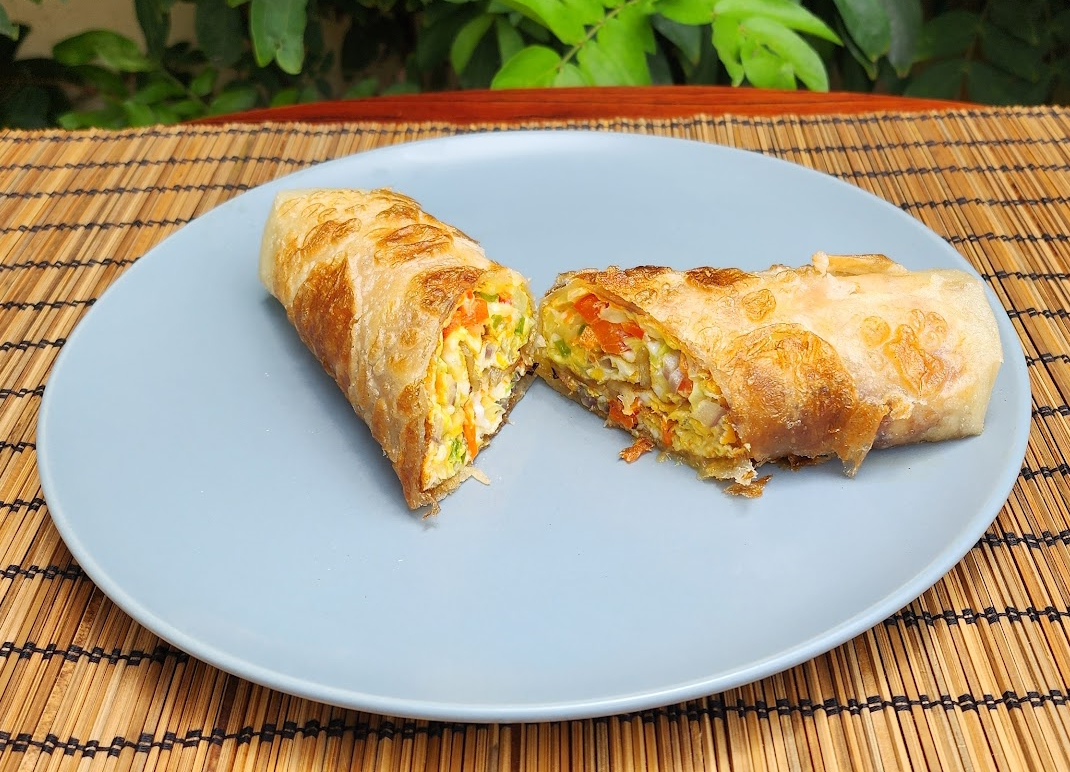This month’s recipe is Ugandan Rolex: a simple, fast, and crowd-pleasing dish that’s sure to impress your friends and family! Rolex is an omelette chock full of vegetables rolled in a fresh fried chapati. Breakfast burritos look out!

The Rolex was born in the early 2000s on the streets of Kampala, Uganda’s capital, when chapati vendors devised a creative way to serve busy students and workers: roll up an omelet stuffed with chopped vegetables inside a freshly fried flatbread. It was fast, filling, portable—and cheap. The name "Rolex" is a portmanteau of “rolled eggs.”
The dish's popularity is often credited to chapati vendors near Makerere University, especially in the Wandegeya neighborhood, where stalls like Sula's became famous for serving hungry university students as it typcially cost less than half a US dollar. From there, the Rolex rapidly spread across Uganda and has become the country’s most universally recognized dish—transcending Uganda’s more than 50 tribal, linguistic, and regional cultures. While many Ugandan dishes have distinct tribal or regional roots, the Rolex is truly national. From urban Kampala to rural villages, everyone knows and loves the Rolex.
Chapati itself arrived in Uganda decades earlier, brought primarily by South Asian (Indian) immigrants and merchants during the late 19th and early 20th centuries, when Uganda was under British colonial rule. As Indian laborers, traders, and railway workers settled in East Africa, their food traditions—including flatbreads like chapati—were adopted, adapted, and eventually integrated into Ugandan daily life. Tragically, in 1972, then-President Idi Amin ordered the expulsion of all non-Ugandan Asians, leading to a mass exodus of tens of thousands.
In 2023, Ugandan chefs made international headlines by breaking the Guinness World Record for the world’s largest Rolex, weighing over 200 kilograms (more than 440 pounds). The Rolex has become both a national treasure and an emblem of Uganda's culinary creativity.
The Rolex has even drawn attention from comedian Trevor Noah, who posted on his X account: "OK Uganda, you win. I'll try to visit sometime. But when I land, I want the original Rolex made by Sula in Wandegeya."
In Uganda, Rolex is almost always cooked to order over small charcoal griddles at taxi stands, bus stops, and street corners. It's inexpensive, filling, and widely accessible—sometimes for the equivalent of a dollar or less.
The Rolex has become such a unifier that, despite Uganda’s rich diversity of ethnic cuisines, it may well be the one dish that’s equally beloved from Kampala to the most remote villages.
Cook's note: For speed and convenience, we prepared this version using high-quality uncooked flour tortillas, fried briefly to substitute for homemade chapati. While purists may prefer scratch-made chapati, the tortilla shortcut works surprisingly well while preserving the spirit of the dish.
Ingredients:
- 2 large eggs
- Approximately 3 to 4 ounces (quarter pound) total shredded vegetables:
- Cabbage (thinly shredded)
- Tomatoes (finely diced)
- Red onions (thinly sliced)
- Carrots (shredded)
- 1 chapati (see preparation below)
- Salt and pepper to taste
- Cooking oil
- Optional: chopped chili or chili flakes
Chapati Preparation:
- 2 cups all-purpose flour
- 3/4 cup warm water (adjust as needed)
- 1 teaspoon salt
- 2 tablespoons vegetable oil (plus extra for cooking)
In a bowl, combine flour and salt. Gradually add warm water while kneading to form a soft, smooth dough. Knead for about 8-10 minutes. Cover dough and let rest for 30 minutes. Divide into 4 equal balls. Roll each into a thin 8-10 inch circle. Heat a lightly oiled skillet or pan over medium heat. Cook each chapati 1–2 minutes per side until lightly browned and flexible.
Rolex Preparation:
- In a bowl, beat the eggs. Add the shredded cabbage, diced tomatoes, sliced onions, shredded carrots, salt, pepper, and chili if desired.
- Heat oil in your cast iron skillet over medium-high heat. Pour in the egg mixture, spreading evenly to form a round omelet. Cook 2–3 minutes slightly browned on the bottom.
- Using a big spatula or two spatulas, flip the omelette over and cook until the egg is firmly set.
- Place the chapati on a plate, top with the omelette and then roll everything up tightly.
Recipe by T. Johnston-O'Neill
Photos by Shari K. Johnston-O'Neill









